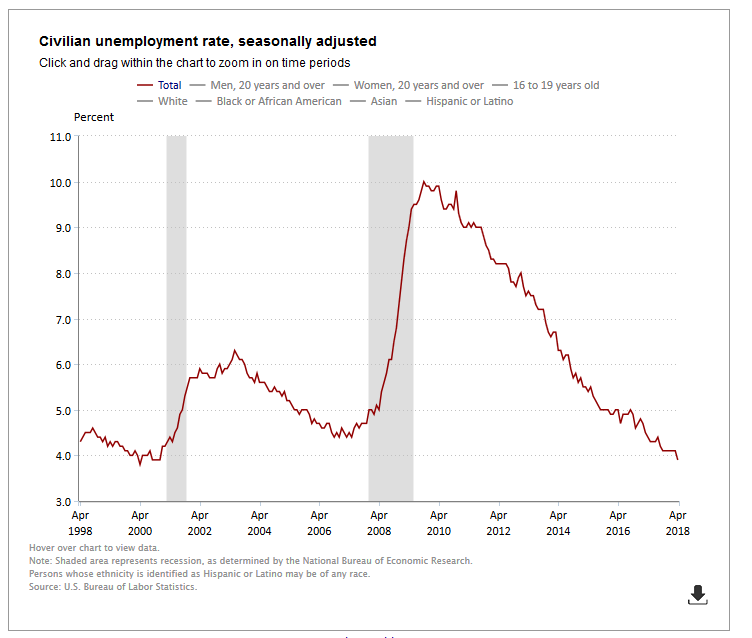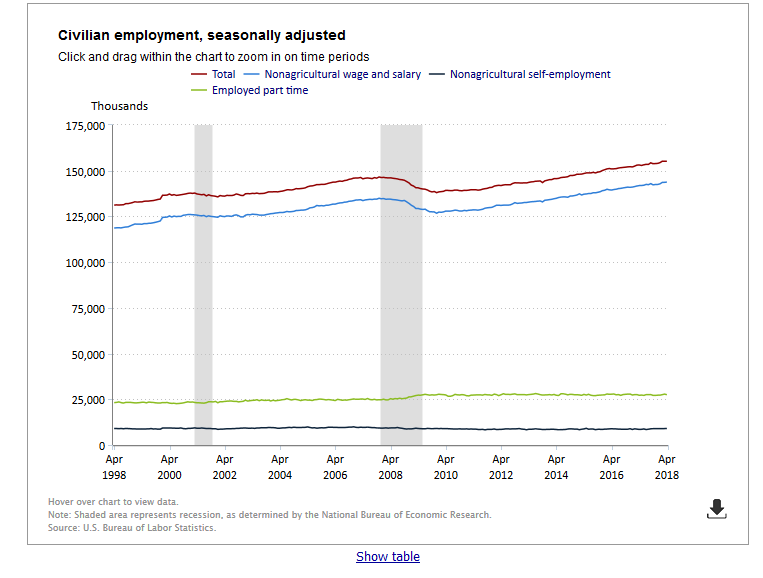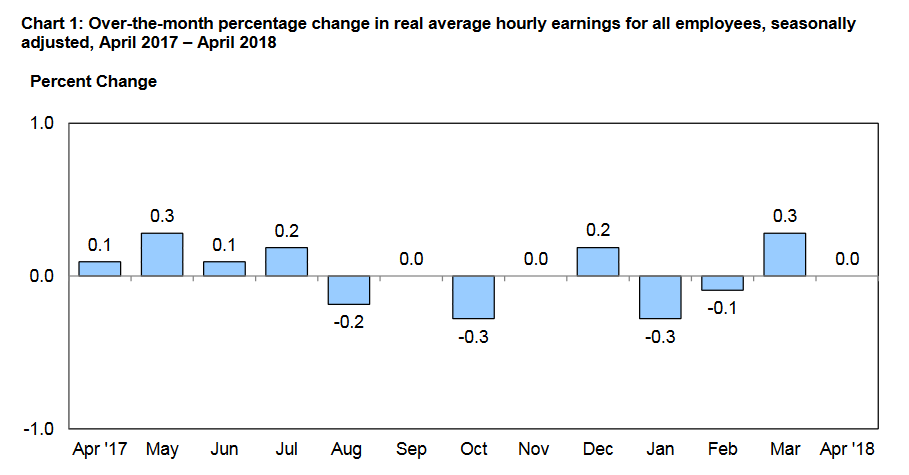Employment Blog May 2018
This employment blog is from the U S Department of Labor, Bureau of Labor Statistics. Nonfarm payroll employment increased by 164,000 in April, and the unemployment rate edged down to 3.9 percent. Over the month, job gains occurred in professional and business services, manufacturing, health care, and mining. Incorporating revisions for February and March, which increased nonfarm payroll employment by 30,000 on net, monthly job gains have averaged 208,000 over the past 3 months. This information is detailed in Charts 1 and 2 below.


In April, employment in professional and business services increased by 54,000. Over the year, employment in the industry has grown by 518,000.
Manufacturing employment rose by 24,000 in April. The gain was largely in the durable goods component, with machinery adding 8,000 jobs and employment in fabricated metals continuing to trend up (+4,000). Over the past 12 months, manufacturing has added 245,000 jobs, with about three-fourths of the growth in durable goods industries.
Employment in health care increased by 24,000 in April, about in line with its average monthly gain over the prior 12 months. Within the industry, employment rose over the month in both ambulatory health care services (+17,000) and hospitals (+8,000).
Mining employment increased by 8,000 in April, with job gains occurring primarily in support activities for mining (+7,000). Employment in mining has grown by 86,000 since a recent low point in October 2016.
Employment in other major industries–construction, wholesale trade, retail trade, transportation and warehousing, information, financial activities, leisure and hospitality, and government–showed little change in April.
Real average hourly earnings for all employees were unchanged from March to April, seasonally adjusted, the U.S. Bureau of Labor Statistics reported today. This result stems from a 0.1-percent increase in average hourly earnings being offset by a 0.2-percent increase in the Consumer Price Index for All Urban Consumers (CPI-U). Real average weekly earnings decreased 0.1 percent over the month due to no change in both real average hourly earnings and the average workweek. This information is detailed in Chart 3 below.

